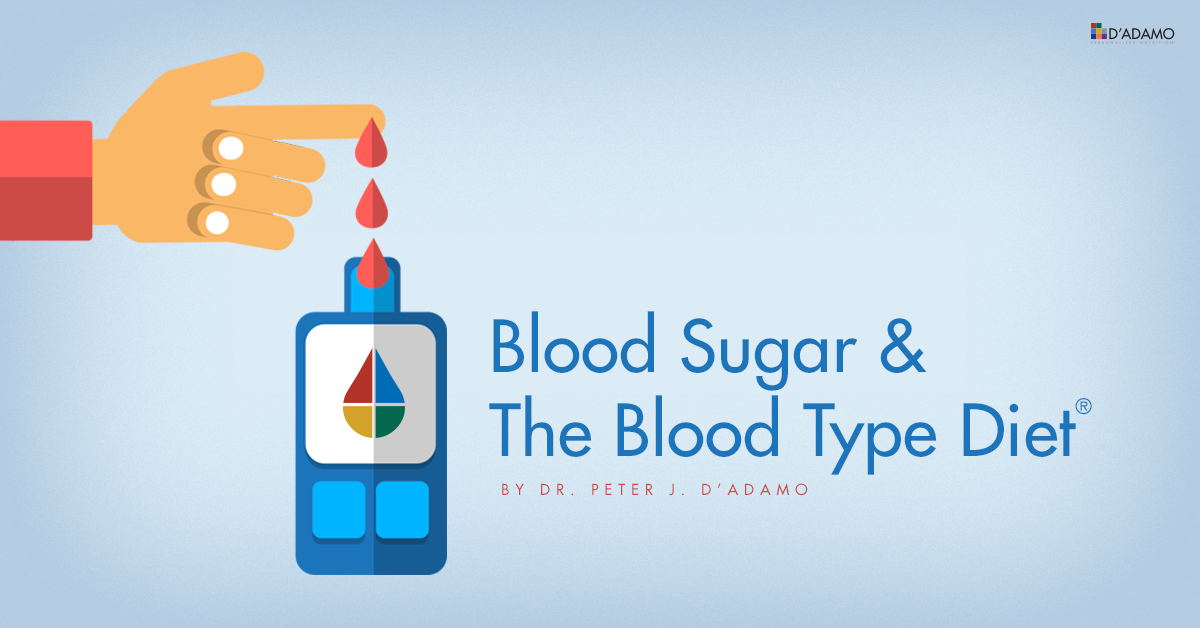
Everyone can benefit from following the Blood Type Diet. For individuals who are challenged
with blood sugar issues, the personalized nutrition and lifestyle guidelines of the Blood Type Diet provide additional support for healthy blood sugar maintenance and regulation.
Let's quickly review some fundamentals of blood sugar maintenance. The hormone insulin produced in the pancreas, moves sugar out of the bloodstream and into cells. If there's more sugar in the bloodstream than the body needs right away, the extra is stored as fat. Normally, the presence of too much sugar in the blood signals the pancreas to release insulin, and lowered blood sugar levels makes insulin production stop.
Low blood sugar, or hypoglycemia, occurs when there's too much insulin for the amount of sugar. This can happen from eating a high sugar, low fat, low protein meal that releases a lot of sugar quickly. Then no more energy is released while insulin levels are still high. Eating a diet that's right for your type can help keep blood sugars in a healthy range.
Type 1 Diabetes occurs when the pancreas stops producing insulin. Insulin shots will be needed for life, and following the right diet provides additional support and helps prevent complications. Type 2 Diabetes occurs when the pancreas still makes insulin, but the insulin isn't working as well as it should.This can be managed via diet, but sometimes medications are also needed.Gestational diabetes is when blood sugar gets too high during pregnancy. It usually clears up after delivery, but it raises the risk for Type 2 Diabetes later in life.
People with diabetes often have high cholesterol and/or high triglycerides. Your body uses cholesterol to build cell walls and to produce certain vitamins and minerals. Triglycerides are used as stored fat that keeps you warm, protects organs, and provides energy reserves. When these fats are out of control, they collect and harden into arterial plaque, which blocks the flow of blood to the heart. Uncontrolled high blood sugar can cause many complications, involving the kidneys, blood vessel, and nerves.
Many people with Type II Diabetes or pre-diabetes also have high cortisol levels and excess body fat. Cortisol is a stress hormone, and among other things, it causes blood sugar to go up. This is useful in the "fight or flight" reaction- giving our ancestors the energy to escape from predators. But, chronic high cortisol interferes with another hormone called leptin. Leptin acts on the hypothalamus to regulate the extent of body fat, the ability to burn fat for energy, and satiety (the state of being completely full). A vicious cycle follows as excess body fat encourages cortisol production, which can then lead to high blood sugar levels, high blood pressure, and other health problems associated with obesity.
People with Blood Types A and AB lack the enzymes to digest high fat and high protein meals. Over consumption of fatty foods increases the cardiovascular risks for diabetics. Blood Types Os and Bs lack the ability to digest high carbohydrate meals and are prone to high triglycerides and high blood pressure. Both Blood Types As and Bs have higher natural levels of cortisol, and need to work on stress management as part of their healthy lifestyle.
Some foods contain proteins called lectins – abundant and diverse proteins found in foods – which can agglutinate or clump your blood. Lectins are highly blood type specific, making them good for some people while toxic to others. Some lectins, particularly those found in many common grains, can wreak havoc on the body's fat cells by binding to their insulin receptors.
The Blood Type Diet is designed to be low in harmful lectins, and to emphasize the foods that are easier for your body to digest and limits the foods that are harder on your body. For many diabetics and pre-diabetics, weight loss and management is an important health goal. Following the Blood Type Diet can encourage weight loss and blood sugar stability.





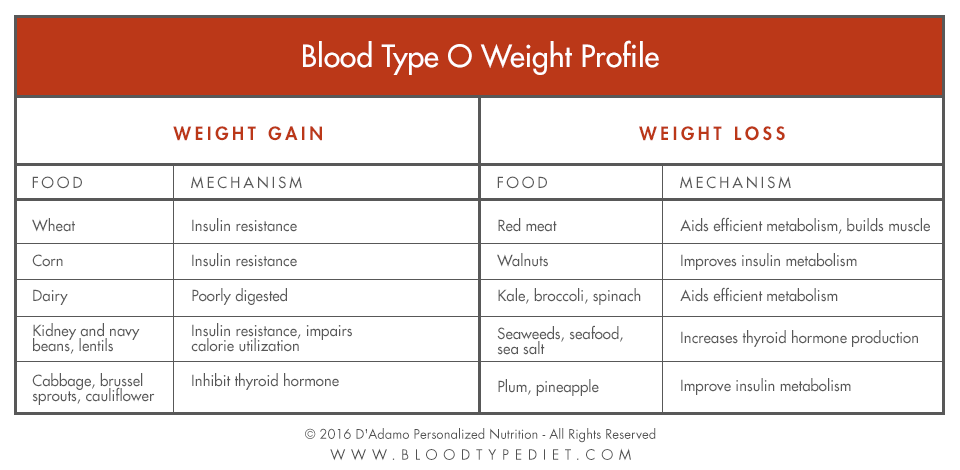
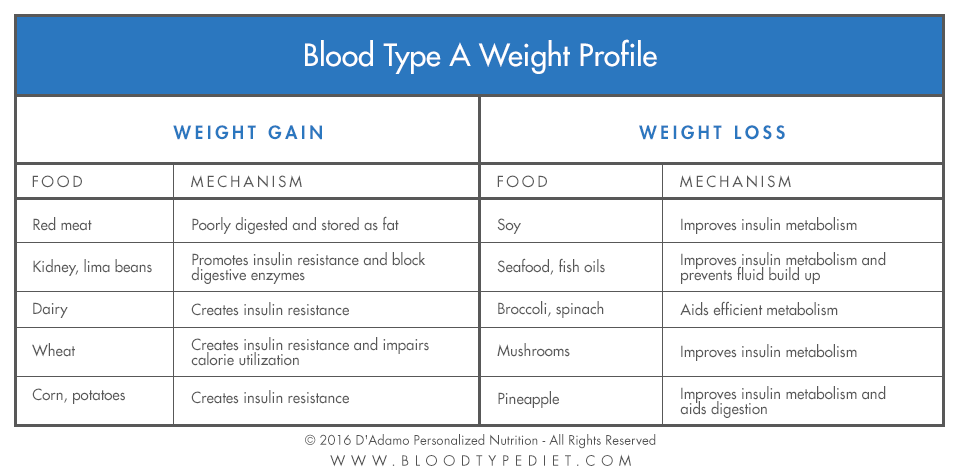
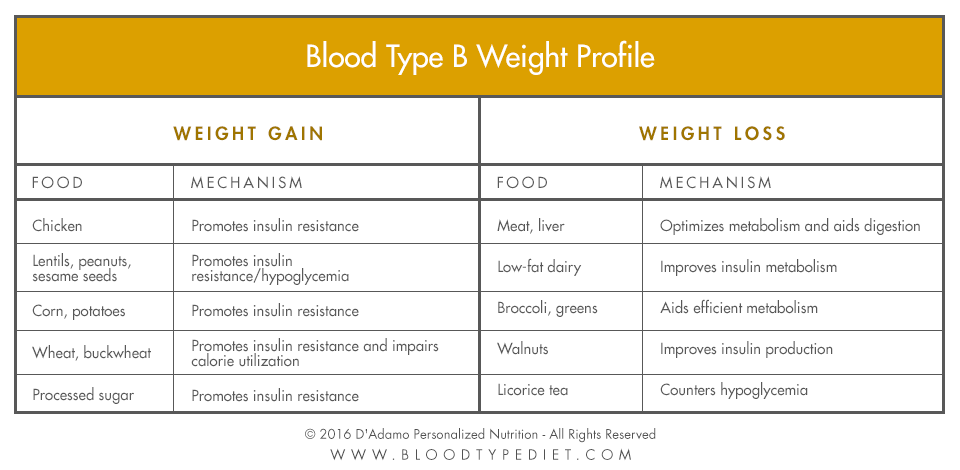
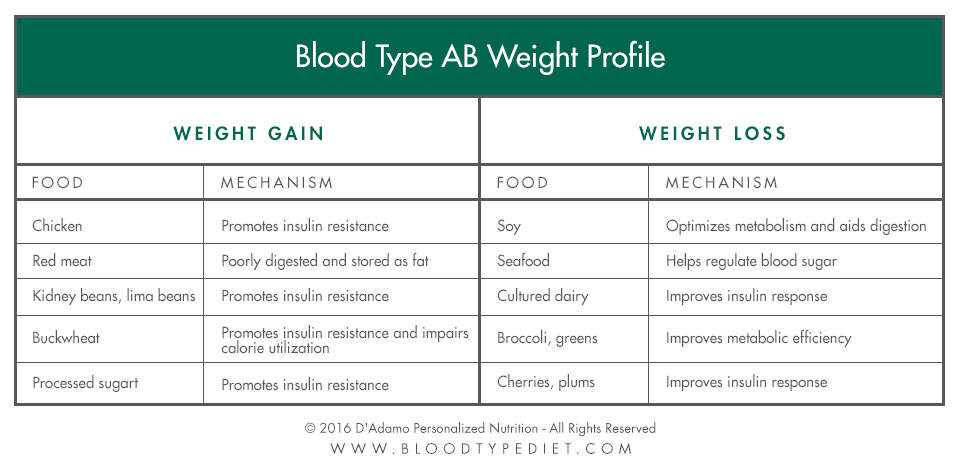
Комментариев нет:
Отправить комментарий